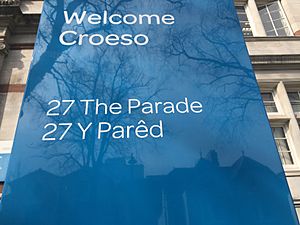Circumflex facts for kids
The circumflex is a special mark, like a tiny hat, placed over a letter, usually a vowel. These marks are called diacritics, and they change how a letter sounds or what a word means. You'll often see the circumflex in languages like French.
In the past, the circumflex was actually two other marks, an acute accent and a grave accent, combined into one.
Contents
Why is the Circumflex Used?
The circumflex has a few important jobs, especially in French.
Showing Lost Letters
One main reason the circumflex is used in French is to show that a letter, often an s, used to be there but is now gone. It's like a little historical reminder!
For example:
- The old French word maistre (meaning "master") became maître in modern French. The circumflex on the 'i' shows that the 's' disappeared.
- Another example is forest (meaning "forest"), which became forêt.
Telling Words Apart
Sometimes, the circumflex helps us tell the difference between words that look or sound similar but have different meanings. These are called homophones.
For example, in French:
- sur means "on" or "over."
- sûr (with the circumflex) means "safe" or "certain."
Even though they look very similar, the circumflex changes the meaning and sometimes even how the word is pronounced.
Other Uses of the Circumflex
While French is a common example, the circumflex is also used in other languages for different reasons:
- In Portuguese, it shows a specific vowel sound.
- In Romanian, it's used on the letters 'a' and 'i' to show a certain vowel sound.
- In Welsh, as seen in the image, it can show that a vowel is long and stressed.
So, the circumflex is a small but mighty mark that helps us understand words better and even learn about their history!
See also
 In Spanish: Acento circunflejo para niños
In Spanish: Acento circunflejo para niños


